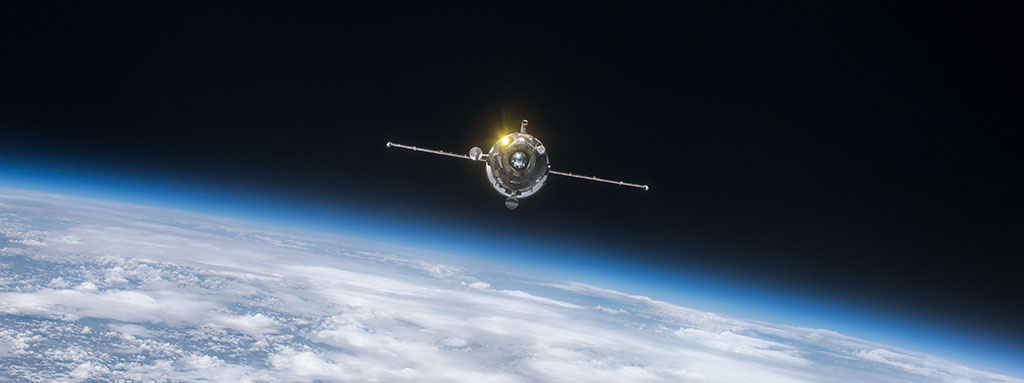Everyone is aware of the intense competition that existed between the Cold War’s two main powers: the USA and the former USSR. Proof of this is what came to be known as the Space Race, a term coined precisely because of the efforts made by both powers to be the first to reach certain space flight milestones.
The waste produced by the space stations is placed into the Progress craft for it to disintegrate as it re-enters the atmosphere.
Among the many accomplishments reached by both powers, one of the advances made by the USSR was the application of unmanned flight technology to this field. The existence of spacecraft which did not require crews conferred a new particular feature to Russian space stations (the Salyut 6, Salyut 7 and MIR space stations), since they allowed cosmonauts to remain in the space stations indefinitely, which were supplied automatically. Faced with the elevated costs of running a manned flight system, along with the dangers it entailed, this advance led to a reduction in needs, given that these spacecraft were launched like missiles to go beyond the stratosphere. Progress spacecraft were thus uncoupled, started up their engines and autonomously set their course to their destination: the space stations.
Progress spacecraft are based on the structure of Soyuz rockets, the difference being that the crew capsule was eliminated and converted into a fuel tank. They are thus given a greater range and the capability to supply energy to space stations. They can even be used as thrust engines, thereby helping to make orbital corrections when necessary. Once the spacecraft has delivered its service, it is undocked from the space station, its orbital break engines are shut down and it lets itself be trapped by the Earth’s gravity, entering into the atmosphere where part of the spacecraft (designed for such purpose) disintegrates due to the friction and the other part falls like a capsule with a parachute to be recovered with whatever is to be sent from the space station.
For curiosity’s sake, it should be mentioned that the waste produced by the space stations is placed into the Progress craft for it to disintegrate as it re-enters the atmosphere.
The spacecraft’s design can be divided into three differentiated parts:
- Cargo module (Грузовой отсек in Russian): a pressurised orbital module used to carry food, clothing and different kinds of equipment. It also includes an automated docking system and a series of pipes to transfer fuel (hydrazine [UDMH]) and the oxidising agent (nitrogen dioxide [N2O4]) from the cargo module to the space station to fill the space station’s tanks.
- Fuel module (Отсек компонентов дозаправки in Russian): the manned version’s re-entry module is replaced in Progress spacecraft with this unpressurised module (to prevent leaks in the space station’s atmosphere) which carries the fuel and the oxidising agent needed by the station.
- Instrumentation and propulsion module (Приборно-агрегатный отсек in Russian): similar to the Soyuz module, it is a fully automated spacecraft that carries the main engine for the space station’s orbital manoeuvres.
This spacecraft has been improved over time and is today used to supply and resupply the ISS (International Space Station) through already existing versions like: Progress M, Progress M1, MC and MS. The last Progress spacecraft to be launched to resupply the ISS was Progress MS – 05 (No. 66), which docked at the ISS Pirs docking compartment on Friday, 24 February at 8:30 GMT and delivered almost three tons of supplies to the orbital laboratory. The Progress spacecraft was launched from Russian Baikonur Cosmodrome in Kazakhstan on Wednesday, 22 February.
If you are interested in knowing more about the usefulness and features of these spacecraft, click on the following links:
http://www.mcc.rsa.ru/progress_mc02.htm (in russian)
https://www.nasa.gov/mission_pages/station/structure/elements/progress.html#.V4FTO1QrI1M



